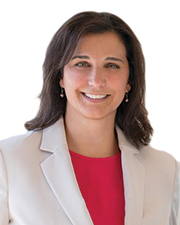News:
Finance
Posted: November 8, 2012
Changes in the appraisal business over the past few years: UAD progress report
With all the big changes in the residential appraisal business over the past few years, starting with the HVCC, AMCs, the 1004 MC, Dodd-Frank, the Uniform Appraisal Dataset (UAD) was, to some, the final insult. Others took it in stride and adapted. A smaller number embraced it as the Next New Thing, right up there with laser measures and tablets.
Appraisers are a funny lot. Conservative, resistant to change, ready to complain at the drop of a hat, and hating anything that forces deviation from "average" or "typical." Yet most consider themselves on the cutting edge in terms of the market, data, and analysis.
Why did the GSEs institute the UAD? Here's the answer. "To improve the quality and consistency of appraisal data on loans delivered to the GSEs, Fannie Mae and Freddie Mac, at the direction of the Federal Housing Finance Agency (FHFA), have developed the Uniform Appraisal Dataset (UAD), which defines all fields required for an appraisal submission for specific appraisal forms and standardizes definitions and responses for a key subset of fields."
The GSEs realized how subjective and non-uniform much of the description and analysis provided in appraisals had become. Their studies indicate a concerning amount of inconsistency in the way appraisers report seemingly unremarkable and ordinary information.
The UAD is the result of some serious research and technological expertise into the way appraisers report information and how systems can be created to make sure that the information is consistent. Not incidentally, the systems have provided means by which appraiser information can be now readily harvested.
For most non-appraisers (and for most non-residential appraisers), the change falls below the radar of being significant. However, for residential appraisers, the UAD represents a sea change in the way appraisals are written and the way data is entered and analyzed.
Most appraisers are still trying to figure out the issues.
Some appraisers are worried about the system taking all their data and putting them out of a job. (Get used to it, this is not the first assault on the hallowed halls of appraising. There are larger things to worry about than how to fill out forms)
Some appraisers worry about the lack of flexibility the system has due to the checklist type of entries required for many fields. (If there were 12 "C" selections, appraisers would be complaining about not enough gradations! I actually think that the data drop downs are well designed)
Some appraisers worry that the system will unnecessarily inhibit their ability to be "logically inconsistent." (Yes, the system is designed to create "critical errors/hard stops" to ensure that appraisers will correctly enter information that makes sense. The system also allows for exceptions via explanation as necessary)
Some appraisers don't like the way their reports look. (Listen please. It's not high literature that is being created. These are documents meant for loan transactions, not the best seller list)
Other appraisers just seem to be worried. About anything. About everything. (We are not unique. All professions are undergoing gut-wrenching changes, mostly having to do with dealing with technologies and the advent of smart systems)
So, as some appraisers are complain and worry, other appraisers move forward. The future is in understanding and utilizing technology effectively. This is just another step in that direction. This is the principle of change, the one we hold so dear, in action. The UAD has its drawbacks but even in its infant form, it provides many interesting possibilities to appraisers willing to take the time to understand it.
William Pastuszek, MAI, SRA, MRA heads Shepherd Associates, Newton, Mass.
MORE FROM Finance
Eastern Bank donates $2 million to Lynn Public Schools
Lynn, MA The city of Lynn’s purchase of the former Eastern Bank headquarters at 195 Market St. is paying dividends in more ways than one. In issuing an RFP in the spring of 2024, the city was seeking to acquire multi-purpose space,

Quick Hits
Columns and Thought Leadership

Real estate without good estate planning - a troublesome problem - by Daniel Calano
I spent the better part of a day this week working with attorneys on estate planning. I am clearly not an attorney, but I have learned much over the years while consulting on real estate, its potential, its future during the life of clients, as well as, shall we say, later.

The focus on price per s/f compared to the comparable sales used in the appraisal report - by Dennis Chanski
Over the past several weeks, I have completed appraisal assignments for private clients. Interestingly, after submitting these appraisals, I received several phone calls – not to question the value, content, or any incorrect information, but rather to discuss the price per s/f compared to the comparable sales used in the report.

It’s a confusing real estate world: Don’t you think? - by Daniel Calano
The news is full of “never before” pronouncements. Never before has there been a pandemic so impactful on real estate. Never before has technology allowed for remote business meetings on such a frequent basis. Never before would people so comfortably work from home as to vacate office buildings, at least on Fridays and Mondays.

Reverse exchanges and the challenges of a competitive real estate market - by Michele Fitzpatrick
Our current, highly competitive real estate market poses specific challenges for investors who are considering taking advantage of a tax-deferred 1031 exchange. In this market, investors will have no problem selling their current property if priced properly, but they may find it difficult to find a suitable replacement property









.png)
